Autoflower Light Cycle - Best Light Schedule For Autoflowering Cannabis
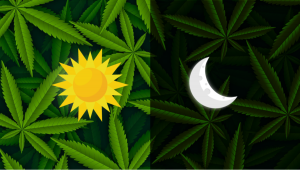
- 1. What is the best light cycle for autoflowers?
- 2. Do autoflowers need darkness?
- 3. 24/0 light cycle
- 4. 20/4 light cycle
- 5. 18/6 light cycle
- 6. 12/12 light cycle
- 7. The best lighting options for growing autoflowering cannabis indoors
- 8. Autoflowering cannabis light cycles - faqs
- 9. In conclusion
Unlike photoperiods that need at least 12hrs of darkness to trigger flowering, autoflowers automatically enter the flowering cycle when they’re mature enough. They start producing buds based on age thus they don't depend on darkness to start the flowering cycle. This means that the best light schedule for autoflowers is either 24/0, 20/4, or 18/6 so there are multiple options and the best one will depend on your growing environment and setup. Light cycles are used to simulate seasons in nature, more light = summer, more darkness = winter.
1. What is the best light cycle for autoflowers?
Most growers agree that the optimum amount of light to give autoflowering strains is somewhere between 18-24 hours of light a day. As a grower you should adjust the light depending on the cultivar you’re growing.
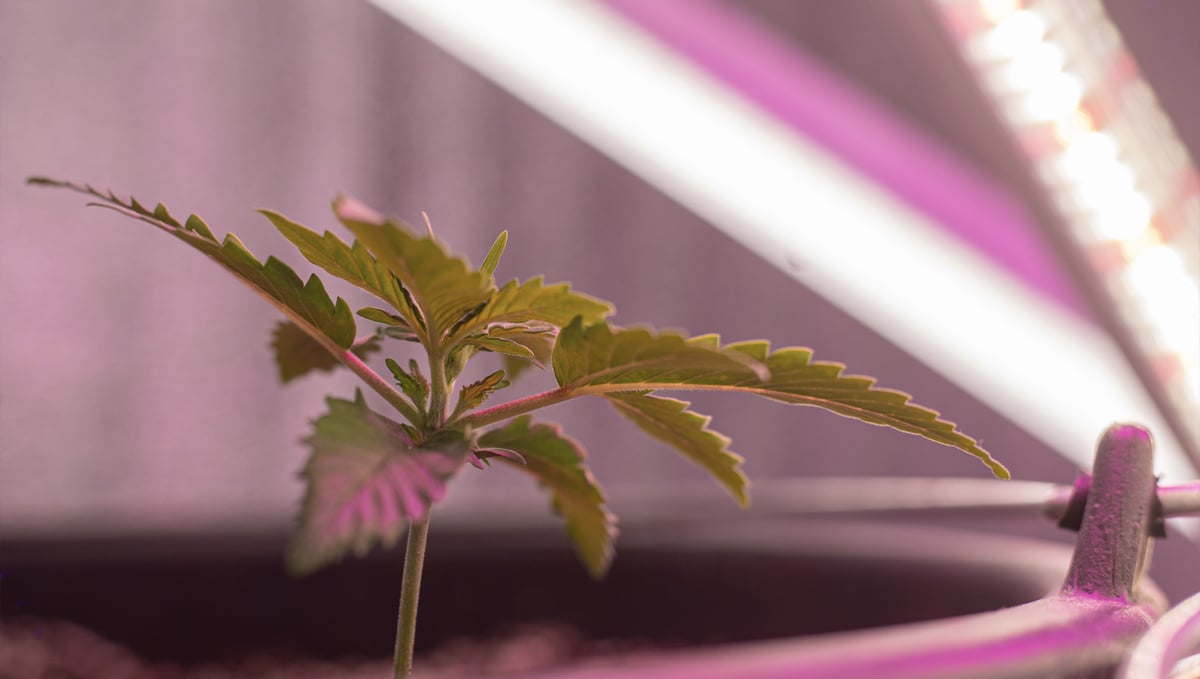
There are basically four light cycles aka Light schedules: 24/0, 20/4, 18/6, and 12/12 (the first number is hours of light, the second is hours of dark). You can always adjust the cycle as long as they are receiving more than 12 hours of light a day (to achieve the best results). An example would be 19/5, 16/8, 22/2, etc.
Having that in mind, as mentioned above, there are growers experimenting with schedules like 16/8 but if you’re new to growing you should stick to the basic schedules mentioned above.
Light Spectrum
Now, despite cannabis plants relying on the amount of light they get, you should know that depending on the phase your plant is in, it will need a different spectrum and that can also affect your harvest.
As you may know, cannabis plants go through 2 stages, the vegetative and flowering stage, during these stages your autoflowers will obviously need light, but they will also need certain wavelengths of the spectrum.
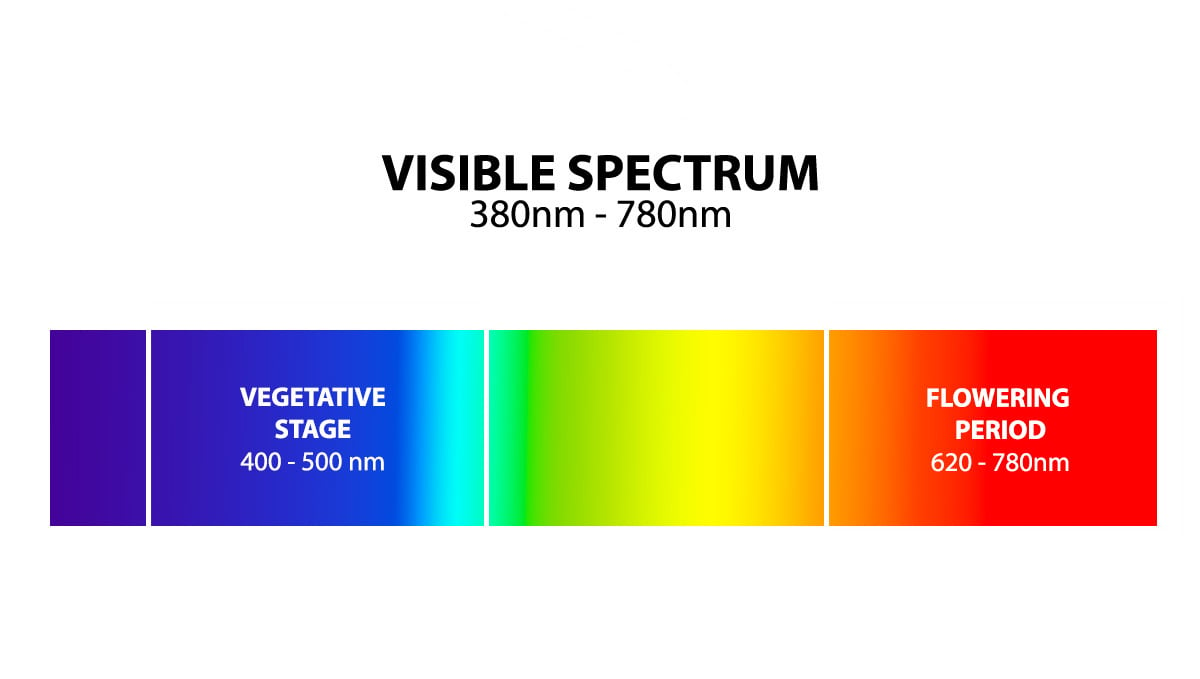
For example, during the vegetative stage, your plants will need a blue spectrum that ranges from around 400 to 550nm whereas during the flowering stage your plants will need a red spectrum, with wavelengths that range from 550-700nm.
This doesn’t mean that you won't be able to have a successful harvest if you don’t provide a full spectrum but you will definitely have better results by providing the whole spectrum from seed to harvest or at least the spectrum your plants need during each stage. Have in mind that this applies to all Light fixtures, including light bulbs, usually good-quality LEDs will emit a full spectrum but you can get mixed spectrum bulbs that will get the job done.
2. Do autoflowers need darkness?
There are growers who believe autoflowering plants need a dark period and won’t be as healthy if they get a 24/0 light schedule. There’s no real evidence of that but there may be exceptions. Also have in mind that a 24/0 will lower humidity, increase temperature, and increase the light bill.
Schedules like 18/6 will save you electricity and if the few hours of darkness indeed help the plant to grow better, it’s a win-win. We recommend starting with an 18/6 light cycle and if you see your autoflower has the potential to grow more, you can always try again in the next cycle.
3. 24/0 Light Cycle
Plants usually grow faster when they get more light. This schedule is a good choice if you live in a cold climate, keeping the lights turned on 24hrs a day will keep your autoflowers warm.
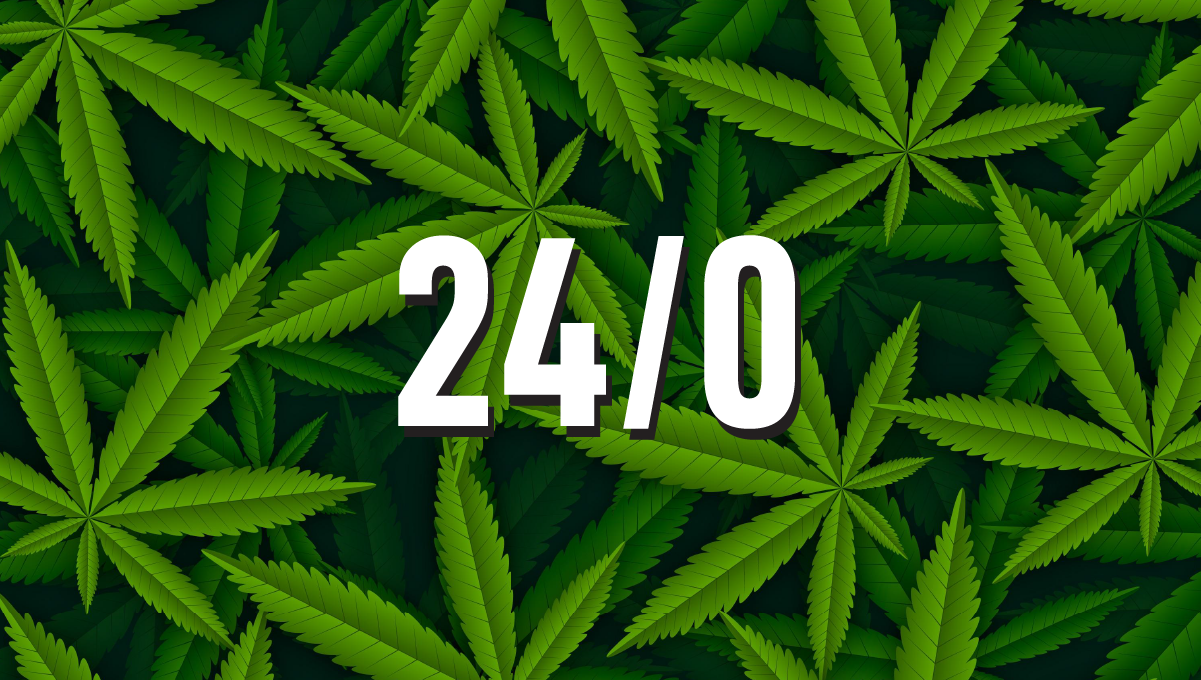
Obviously, this is the easiest autoflower light cycle as you don’t even need a timer, just turn on lights until harvest.
Pros:
- Doesn’t require a timer.
- May result in the best yields.
Cons:
- Uses more energy, can get expensive.
4. 20/4 Light Cycle
The 20/4 has become a popular autoflowering light schedule amongst growers because it’s in the middle between 18/6 and 24/0, providing a good growth without having to spend too much like when growing under 24/0.
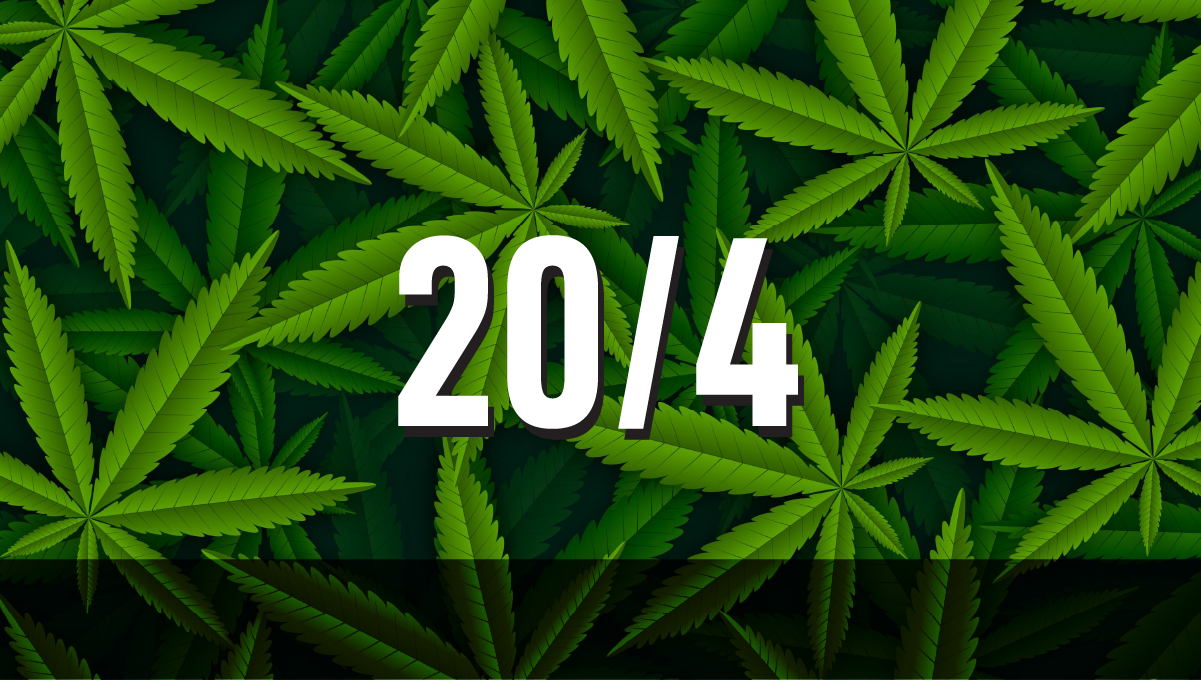
Despite obviously leaving the lights on for a bit longer than in 18/6, your plants still have some time to “rest”, allowing you to have slightly better results without having to spend too much like in a 24/0.
Pros:
- Allows autoflowers to rest.
- Better results than 18/6.
Cons:
- Uses more energy than 18/6, can get expensive.
5. 18/6 Light Cycle
This is the most common cycle for autoflowers. You're providing enough light for your plants to develop and a few hours of dark for them to rest, encouraging healthy growth. This can be good in hot climates.
You can leave your lights at night and have them turn off during the 6 hottest hours of the day. By using this schedule you’ll be using around 25% less electricity, which adds up to be a good economy at the end of every harvest.
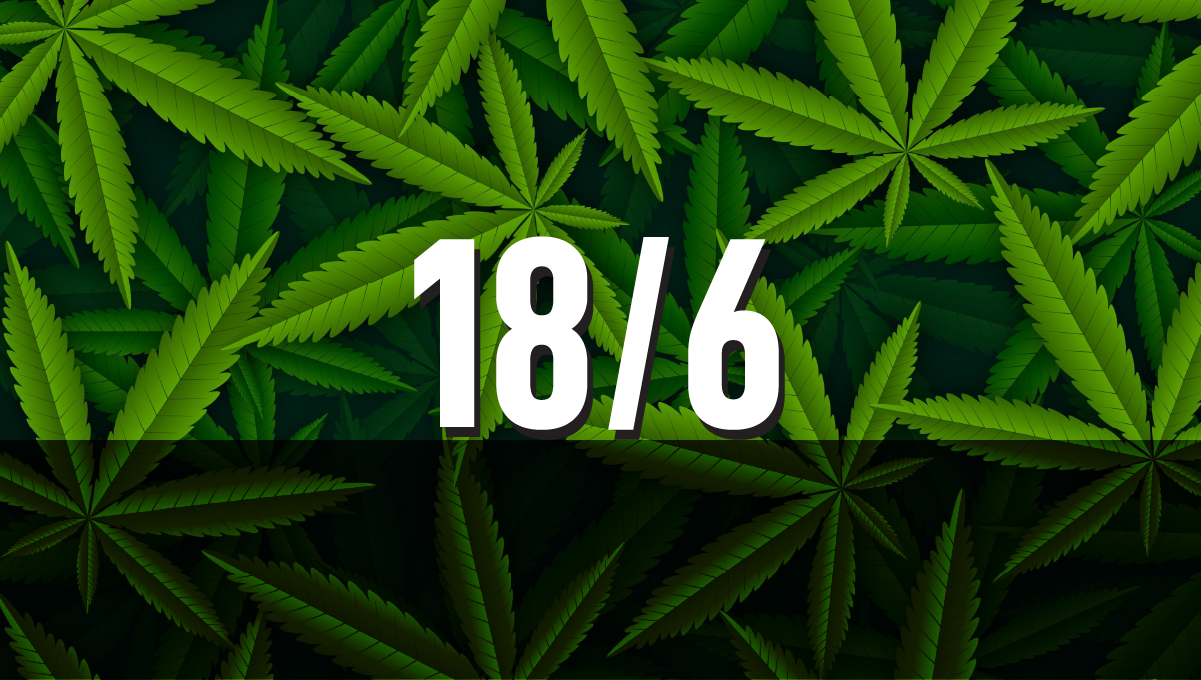
A lot of growers who have experimented with 24/0 and 18/6 light cycles say they didn’t notice any major difference in final yield. The only minor inconvenience with this schedule is having to buy and adjust a timer. They cost around 10 bucks so it shouldn’t be a problem at all.
Pros:
- Allows your plants to rest.
- Uses less electricity, allowing us to save on electricity.
- Can help lower temperatures and increasing humidity in hot climates.
Cons:
- Requires a timer. This shouldn’t be a problem at all, as this is the first thing you should buy when growing indoors.
5. 12/12 light cycle
The 12/12 schedule is normally used for photoperiods. It can also be used for autoflowers but it’s not that popular. Normally growers give autoflowers this light cycle when they have them growing in the same tent as photoperiods. By giving your autos 12/12 you’re not growing them to their full potential.

Because your plant is getting less light each day, it isn’t able to make as much energy to promote growth. It will underperform compared to the other light cycles, that being said, you can grow them just fine if you don’t mind reduced yields and an overall smaller plant.
Pros:
- Uses less electricity, allowing us to save on electricity.
- Allows you to grow autos and photos in the same grow tent.
Cons:
- It’s recommended to grow under 18/6 so 12/12 usually results in aery and underdeveloped buds.
| Autoflower grow light schedule pros and cons | ||
|---|---|---|
| Light Schedule | Pros | Cons |
| 24/0 | Faster growth. | May be too much for some strains. |
| 20/4 | Good growth and allows plants to “rest”. | Slightly less growth than 24/0. |
| 18/6 | Less heat and cheaper. | Slightly less growth than 20/4. |
| 12/12 | Cheapest. | Underdeveloped buds. |
6. The Best Lighting Options for Growing Autoflowering Cannabis Indoors
Now that we have been over all the different lighting schedules for growing autoflowering weed and the related pros and cons, let's have a quick look at the best lighting equipment. There are multiple options available, but a recent surge in the power of LEDs has seen them overtake HID options in terms of the gold standard for home growers. That does not necessarily mean that they are the perfect system for everybody, so lets break down each option so you have the information you need to make an informed choice for your grow room.
CFL (Fluorescent Lights)
Back in the early days of indoor cannabis cultivation, CFL bulb usage was widespread. That is not so much the case in 2022, but there are still some situations where CFLs will fit the bill and do a fine job. CFLs are, by far, the cheapest option for light a grow area, The initial setup cost is super low, as are the maintenance costs. They are suitable for beginners working with a very small grow space and just a couple of plants. While you cant expect to get the same sized harvests as with LEDs of HIDs, you can still expect to harvest between 1 -3 ounces off each plant - as long as you are growing a high-producing strain like Bruce Banner Auto or Amnesia Z Auto, two of our highest yielding strains.
HID (High-Intensity Discharge Lights)
Even if you have never used HID lights for growing weed, you should be familiar with them. These are the type of globes used to light up stadiums and streets and produce a huge amount of light spread and penetration. Up until very recently, they were seen as the best option for indoor cannabis cultivation, and they very well may still be depending on your situation.
HID bulbs cover a wide range of options, but the two most commonly used for indoor growing are MH (Metal Halide) which is used during the vegetative growth period and the first week or so of flower, and HPS (High-Pressure Sodium) which is used for the majority of the flowering growth period. The power that HID bulbs contain is thanks to the arcing electric current that surges through a bulb and contains xenon and sodium gas. They are available in a wide range of wattages, with the most common being 400W, 600W, and 1000W for cannabis cultivation purposes.
LED (Light Emitting Diodes)
While they have been around for more than a decade, LED grow lights are still seen as the new kids on the block. But in the last 5 or so years, we have seen a huge amount of growth in this sector of the lighting market, to the point where it is hard to argue that LEDs are now not the best option for almost all indoor growers. The one obvious downside is the initial cost for a decent LED panel. They can cost upwards of 3 times that of a HID setup, but they are much cheaper to run, last a lot longer, and produce way less heat.
Expert Opinion by Jorge Cervantes - co-author
In the fascinating world of autoflowering cannabis cultivation, understanding the best light schedule is critical to unlocking the full potential of these unique plants. As a long-time cultivator and author in the cannabis field, I've seen firsthand how the proper light exposure can significantly impact the growth and yield of autoflowers.
Autoflowers are remarkable for their ability to flower without needing specific light cycles, but this doesn't mean any light schedule will do. The article co-authored with Enzo Schillaci dives deep into the science behind light schedules, exploring how different periods of light and darkness can influence the plant's development. From enhancing bud production to ensuring robust plant health, the light schedule you choose can make all the difference.
One of the key takeaways from the article is the importance of tailoring the light schedule to your specific growing conditions. Whether you're dealing with high temperatures, limited space, or energy efficiency concerns, understanding how to adjust the light schedule accordingly is crucial. The article provides practical tips and insights, helping you confidently navigate these decisions.
In conclusion, whether you're a seasoned grower or just starting, embracing the nuances of autoflowering cannabis light schedules is essential for a successful harvest. Remember, each plant is unique, and what works best may vary. Experimentation and observation are your best tools in this journey. Happy growing, and may your autoflowers thrive under the perfect light!
7. Autoflowering Cannabis Light Cycles - FAQs
Up until 8 or so years ago, autoflowering genetics were pretty hit-and-miss. But this is just not the case anymore. In some cannabis circles, they are still seen as the black sheep of the family. However, in the last decade, there has been a huge shift in autoflowering genetics.
And thanks to years of determined hard work from a handful of breeders, autos can now match it with the big girls (and in some cases even surpass their photoperiod cousins). Before we sign off, let's run through the most frequently asked questions about autoflowering cannabis light cycles, and answer them quickly.
What is the best light cycle for autoflowering strains indoors?
While this is hotly debated throughout the growing community, the best answer we can give is - it really depends on the strain. Some cultivars respond well to an 18/6 schedule, while others thrive under 20 hours of light and 4 hours of darkness. Many growers just leave their lights on 24 hours a day when growing autos, but that is not what we recommended. For the most part, a lighting schedule of either 18/6 or 20/4 will work great with any auto strain.
What is the best light cycle for autoflowering strains outdoors?
Just like with any cannabis plant, autos crave sunshine - and as much of it as they can get. Very few places in the world offer 18 hours or more of light at any time, but the more direct light your crop receives, the better. If you are growing autos outdoors, try to give them at least 12 hours of direct sunlight each day for the entire lifecycle of the crop.
Do autos need time in darkness?
No, autos will grow under any lighting conditions and do not need a period of complete darkness each day to complete the full life cycle. However, we do recommend giving them a dark period - if not for the entire growth period, then at least during the final few weeks of flowering, as this can help increase resin production and improve the terpene maturity. We also suggest moving the plants to a room where you can leave them in total darkness for the final 24 to 48 hours before you cut them down and hang them up to dry.
Is it okay to change the lighting cycle during the grow?
While such a move could result in photoperiod plants turning into hermaphrodites, it's totally fine for autoflowering strains. Keep in mind that if you reduce the number of light hours below 12 a day, the flowering period may be extended by a few days to even a couple of weeks. This can actually lead to some small final yield gains, but most growers agree that the increased flower time isn't worth this weight increase.
What is the best lighting option for indoor autoflower crops?
Some old-school growers might argue with this. HID lighting was the gold standard for indoor grow ops for decades, but that changed a couple of years ago. We now live in the LED era, and for us, there is really no comparison anymore. LED offers a range of advantages over HID, including being significantly cheaper to run, with cooler running temperatures, and no bulb changes required.
What is the best lighting option for outdoor autoflower crops?
While we are big fans of LEDs for indoor grows, they really don't offer much when it comes to growing outdoors. The sun is still the best light source available, but if you live in an area that only receives about 12 hours of light per day then you may want to look into adding some supplemental lighting to help boost the growth of the crop. This is not necessary though, and while you may not see plants hit their peak potential, autos grown outdoors under 12 hours of quality sunshine will go great.
8. In Conclusion
There isn’t really a proven best light cycle. Before going for any light cycle, think about electricity costs and the climate you’ll be growing in. If you are in doubt, start with 18/6. This cycle is the most used and should work for all autoflowers. When growing outdoors you have to work with what you have as you can’t control the sun (obviously). Outdoor growers should be aware that with the change of seasons the amount of daylight may increase or decrease but autoflowers should grow fine in all seasons.
Even though there are the most common light cycles, make sure you experiment with all of them and find what suits you better because every plant and grow setup is different so there's a chance that you have better results growing under an uncommon light cycle.









Comments